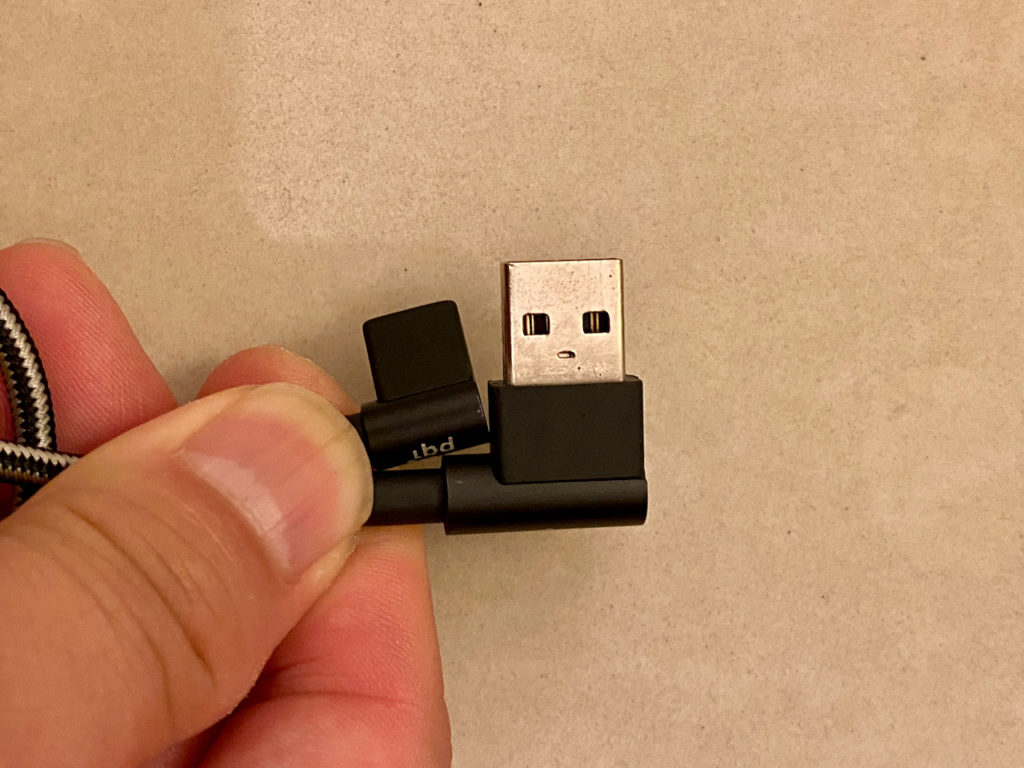このブログ記事の翻訳を進行中です。もうすぐ完成しますので、後ほど再度ご確認ください。ご不便をおかけして申し訳ありません。現在は、こちらで提供されているGPXルートや地図などの情報を自由にご利用ください。
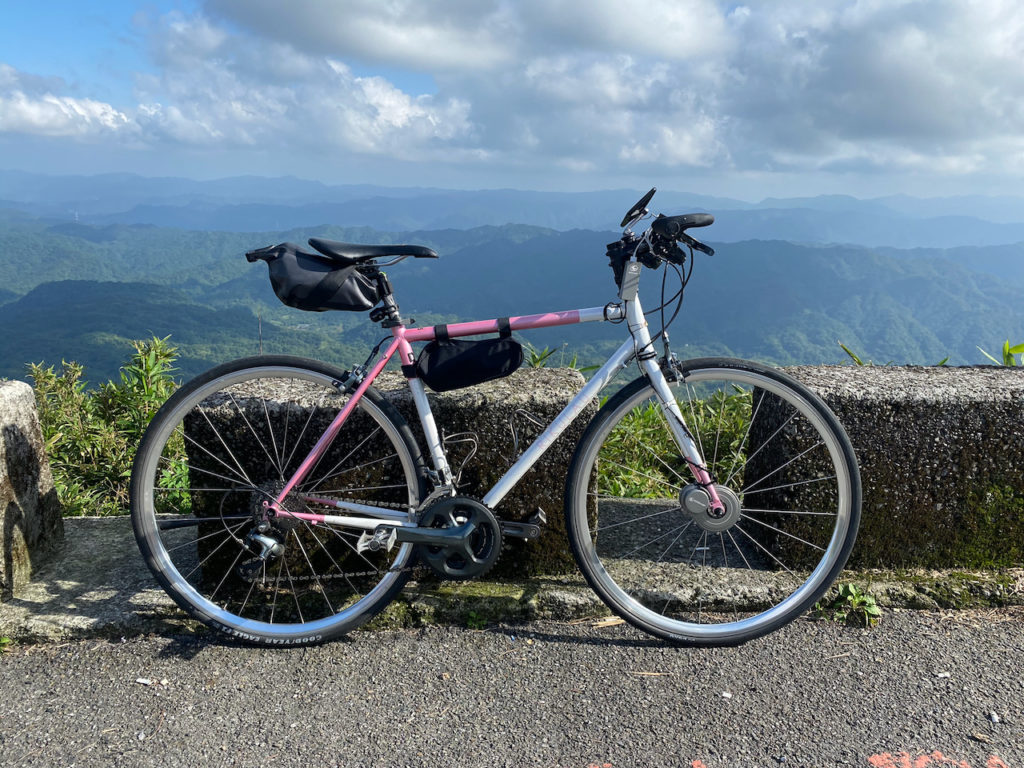
The bike dynamo with its Intelligent Power Management System (IPMS) can pump out a stable 1A current from its 5V USB port when the speed of the bike reaches 15-17km/hour. I have done some field tests to find out its charging performance with an iPhone 11 Pro in different scenarios, including when the phone is in Airplane mode with no Apps running, when the phone is in Non-Airplane mode with no Apps running, when the phone is in Non-Airplane mode and used for navigation and tracking, and when the route involves some climbing. I also did a test with a USB wall charger for comparison. At the end of this post, I will share some tips on how to get the most from the Dynamo for charging.
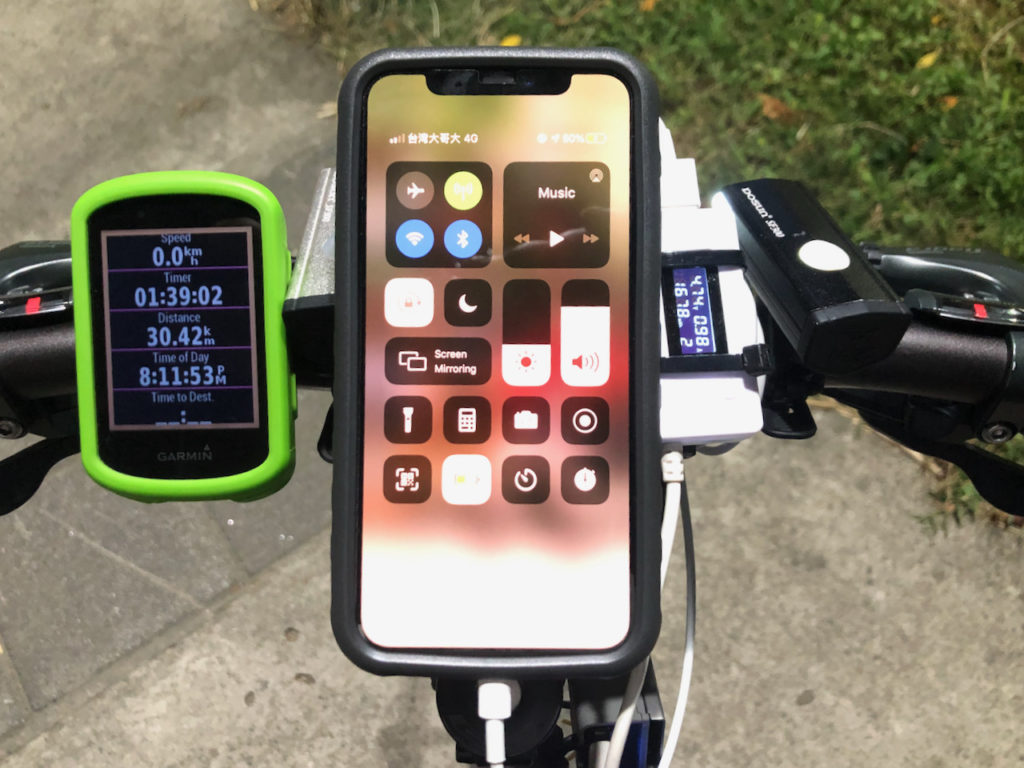
Here is my setup for the test:
- My iPhone 11 Pro mounted on the handle bar
- A bike meter on the left to monitor my speed and to record the timestamp of the data collected
- A USB power meter to monitor the charging current, voltage and energy fed to the phone
How long does it take to charge an iPhone 11 Pro from flat to full with a SPIN UP F12W-Pro?
I did the test by draining all the power from my iPhone’s battery and charging it with the bike dynamo whilst cycling on the Taipei Riverside Bikeways at the speed of around 17km/h. When the phone was booted up, it was automatically set to Low Power mode. I then put it on Airplane mode so that the test result wouldn’t be affected by the conditions of the mobile cellular network especially when the cell phone is moving, like my distance from the base station, how frequent the phone needs to switch over to the next base station, and are there any barriers between the phone and the base station, etc. When the battery level had reached 80%, the iOS was automatically switched back from Low Power mode to Normal mode.
Turned out it took a bit more than 3 hours to charge an iPhone 11 Pro from flat to full. Here is the full record.
Table 1: iPhone in Low Power, Airplane mode charged by SPIN UP F12W-Pro
| Record Time | Time Elapsed / Total Time Elapsed | Meter Reading (mAh) | Battery Level (%) |
|---|---|---|---|
| 19:55 | 0:00 / 0:00 | 0 | 0 |
| 20:45 | 0:50 / 0:50 | 801 | 30 |
| 21:33 | 0:48 / 1:38 | 1584 | 60 |
| 22:24 | 00:51 / 2:29 | 2413 | 90 |
| 22:59 | 0:35 / 3:04 | 2705 | 100 |
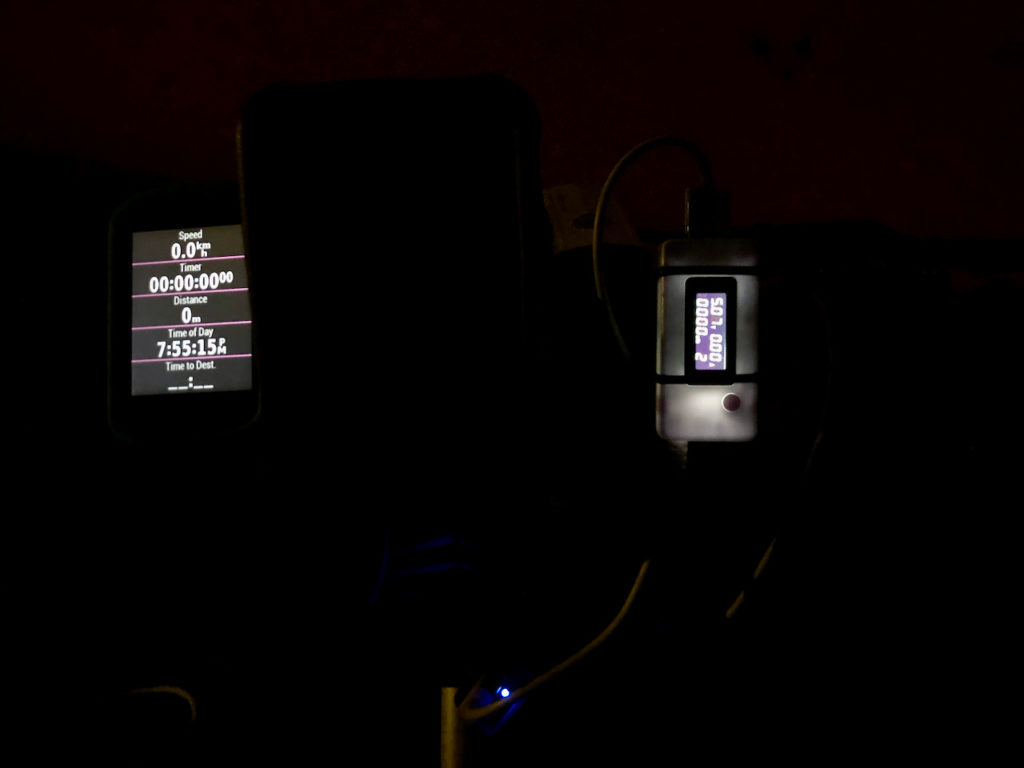
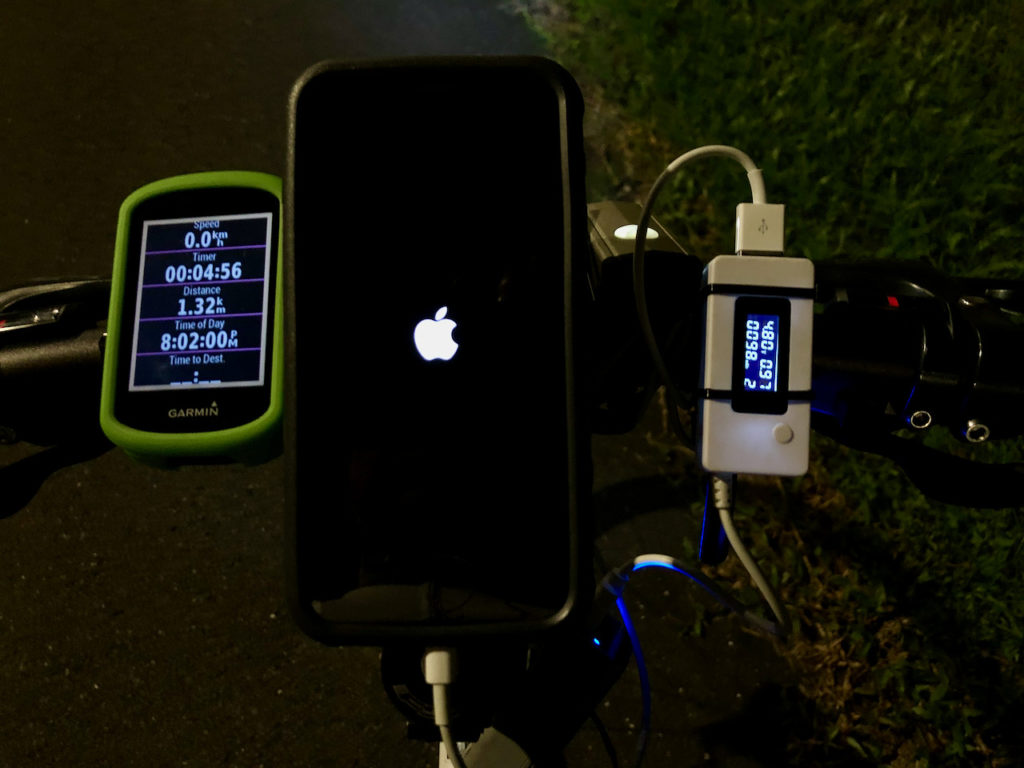
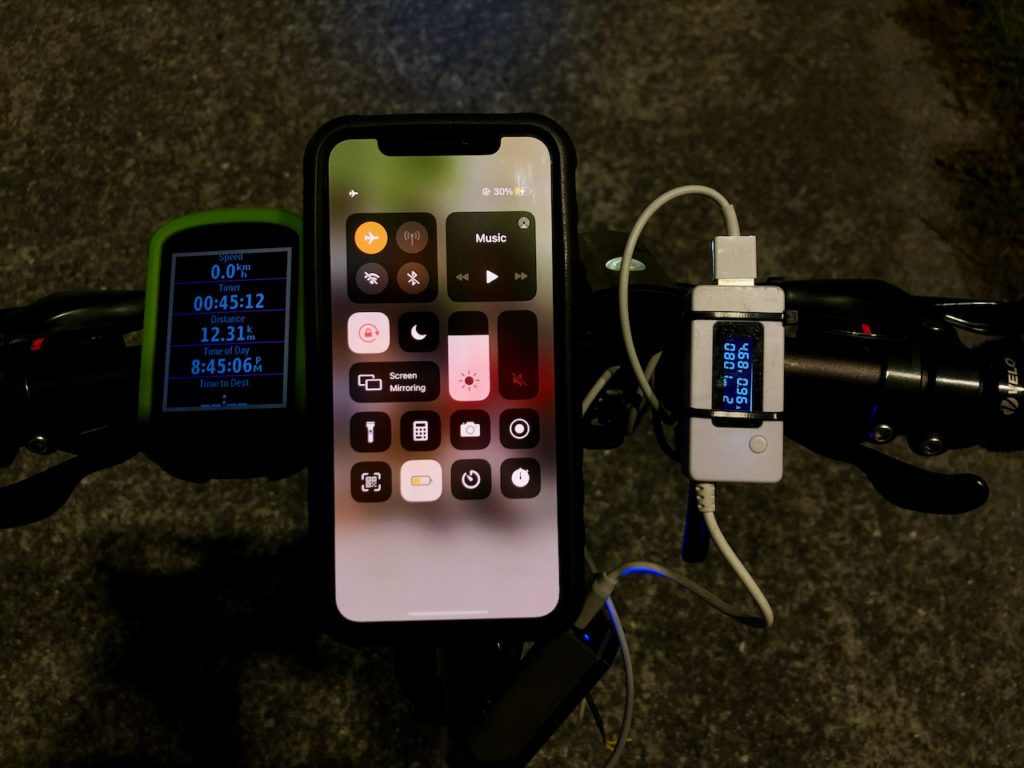
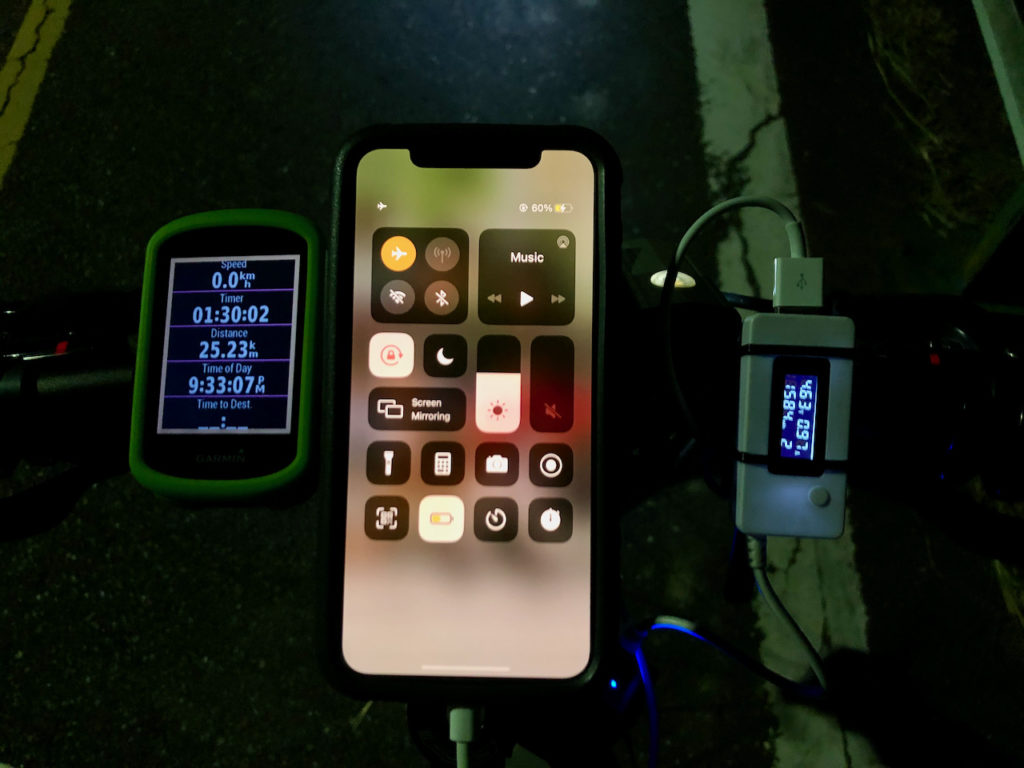
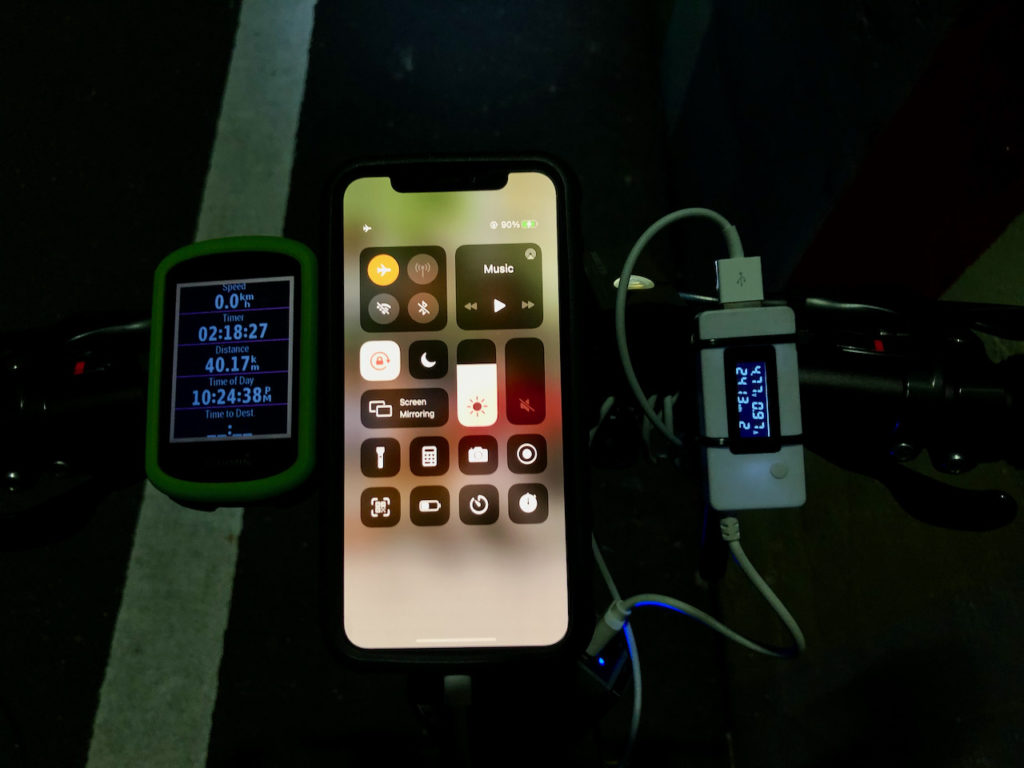
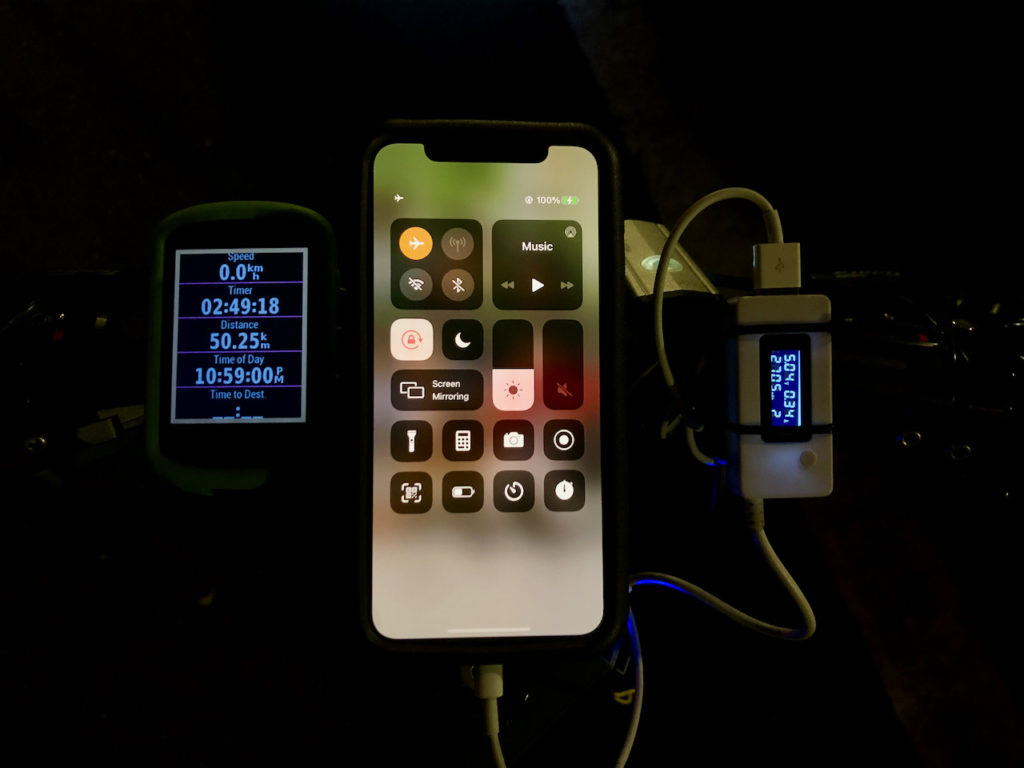
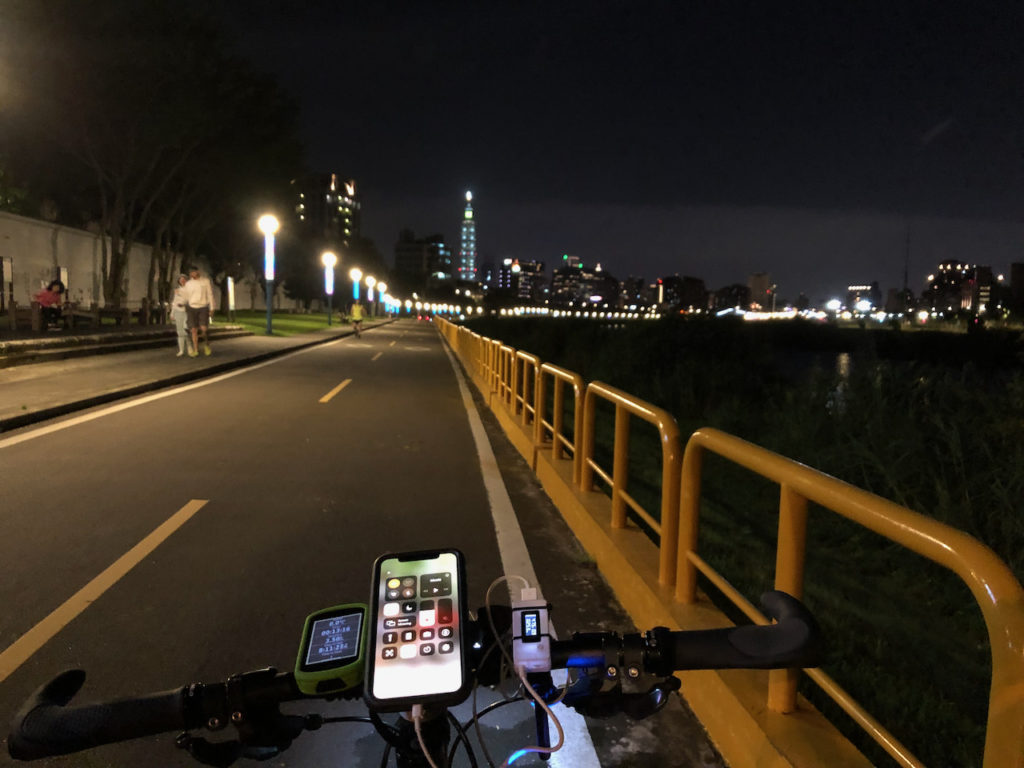
You may have noticed that the voltage of the USB meter is around 4.6V-4.7V in the pictures. It is because I needed to stop cycling to take pictures. When the bike is not moving, the USB port will be powered solely by the dynamo set’s built-in reservoir battery. When it is moving at an average speed of 16km/h, the reading will be slightly more than 5V.
I have done another test with the iPhone put on Low Power, Non-Airplane mode. The result shows that it took 4 hours and 13 minutes and needed 3420 mAh (as compared to 2705mAh in the Airplane Mode test) to bring the battery level to 100%. It is because when the wireless systems, including Wifi, Bluetooth and cellular network, are ON in the non-airplane mode, the iPhone consumes more energy. Also when the iPhone is on the move, it moves from cell to cell covered by different base stations of the cellular network systems. That means it needs to talk to the network more frequently to negotiate for a new base station for connection, which will in turn require more energy.
Table 2: iPhone in Low Power, Non-Airplane mode charged by SPIN UP F12W-Pro
| Record Time | Time Elapsed / Total Time Elapsed | Meter Reading (mAh) | Battery Level (%) |
|---|---|---|---|
| 18:27 | 0:00 / 0:00 | 0 | 0 |
| 19:30 | 1:03 / 1:03 | 1005 | 30 |
| 20:34 | 1:04 / 2:07 | 2048 | 61 |
| 21:40 | 1:06 / 3:13 | 3078 | 90 |
| 22:40 | 1:00 / 4:13 | 3420 | 100 |
How is it compared to a 1A USB wall charger?
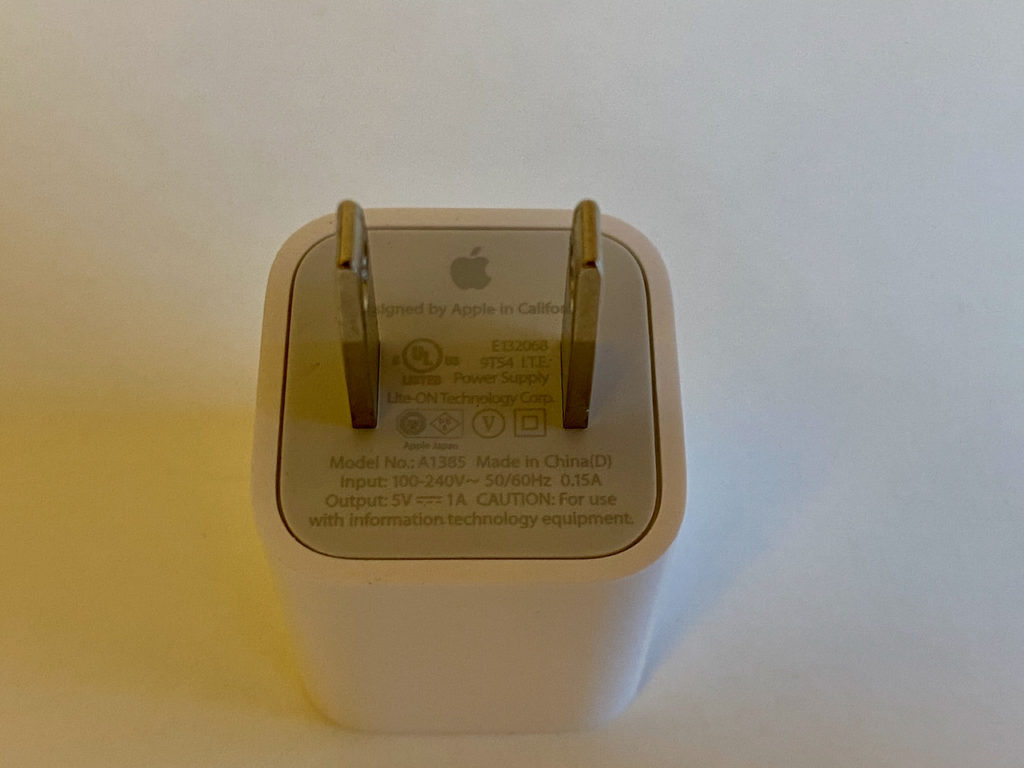
In order to make a comparison, I used this 1A USB wall charger from Apple to charge the same iPhone with a drained battery. Same as the previous test, I manually put the phone to Airplane mode after it booted up at Low Power mode. And again, the iOS was automatically switched back to Normal mode when the battery level had reached 80%. Here is the full record.
Table 3: iPhone in Low Power, Airplane mode charged by Apple 1A USB wall charger
| Record Time | Time Elapsed / Total Time Elapsed | Meter Reading (mAh) | Battery Level (%) |
|---|---|---|---|
| 14:13 | 0:00 / 0:00 | 0 | 0 |
| 15:10 | 0:57 / 0:57 | 918 | 31 |
| 16:00 | 0:50 / 1:47 | 1750 | 60 |
| 16:58 | 0:58 / 2:45 | 2613 | 90 |
| 17:51 | 0:53 / 3:38 | 2807 | 100 |
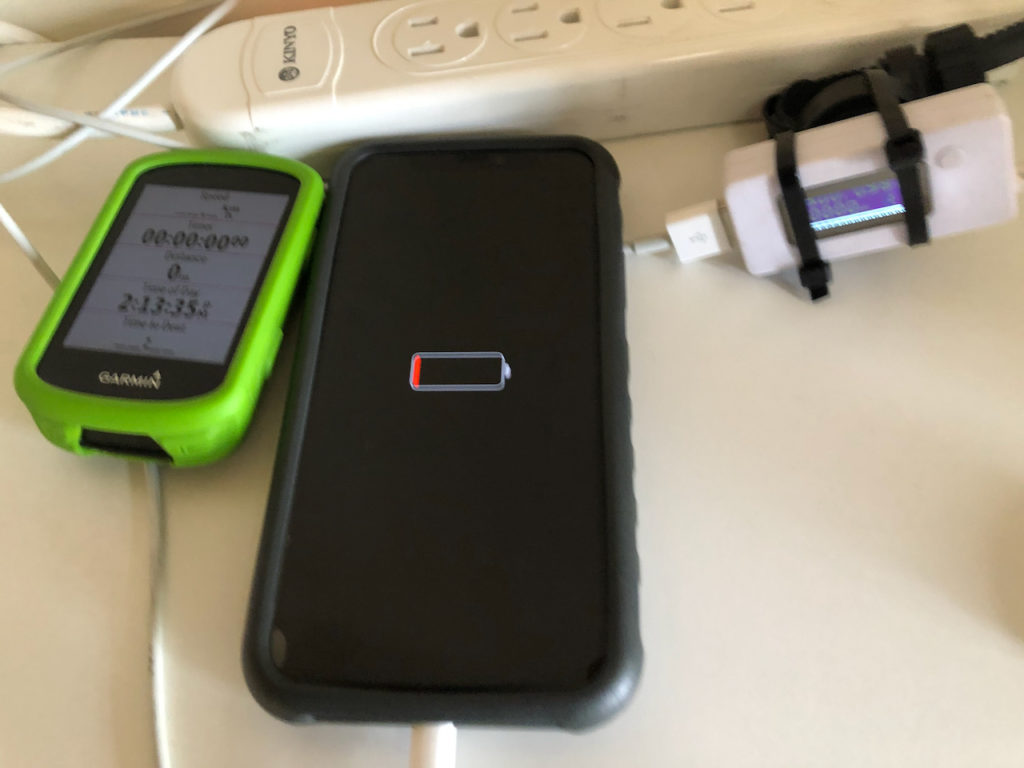
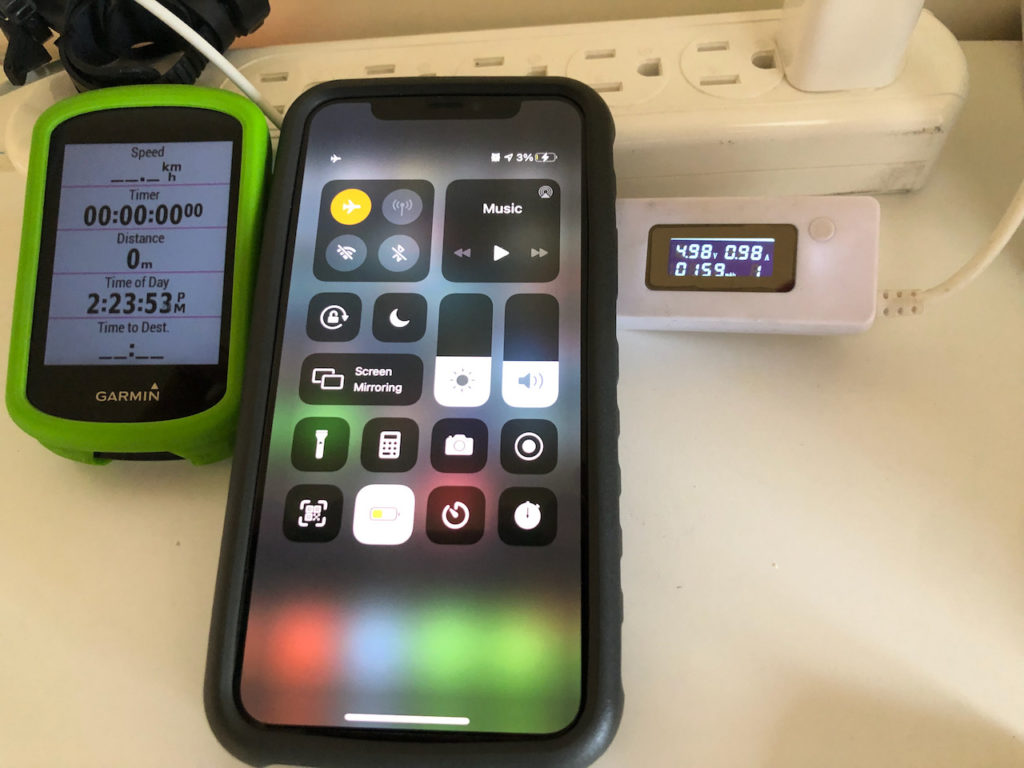
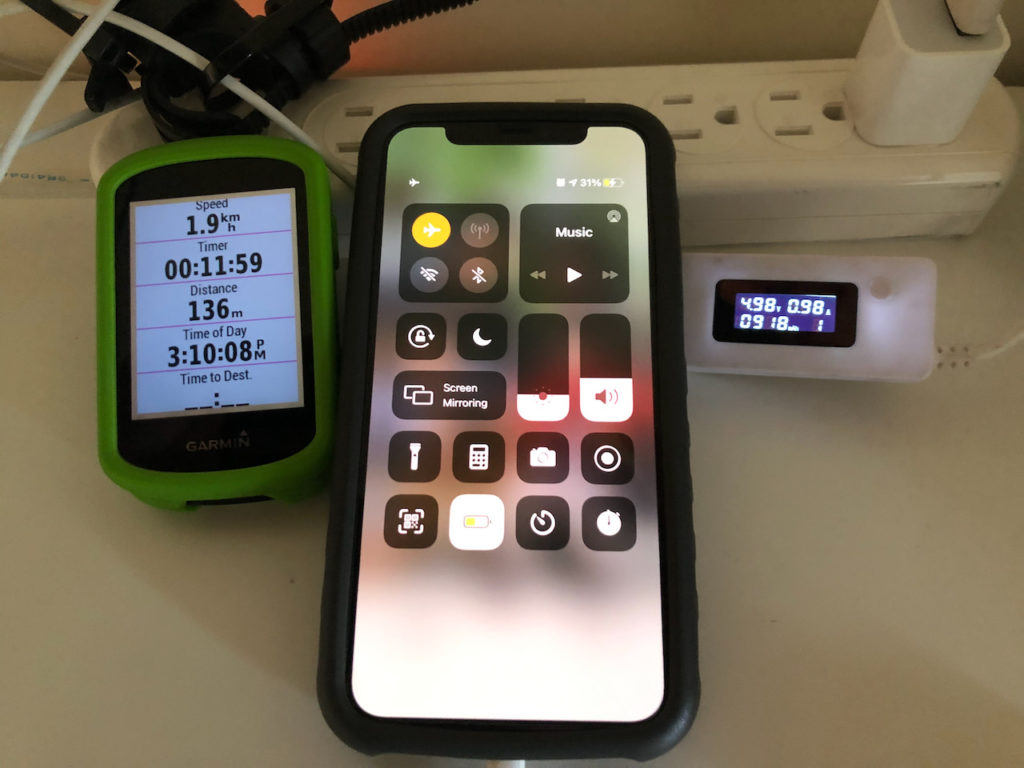
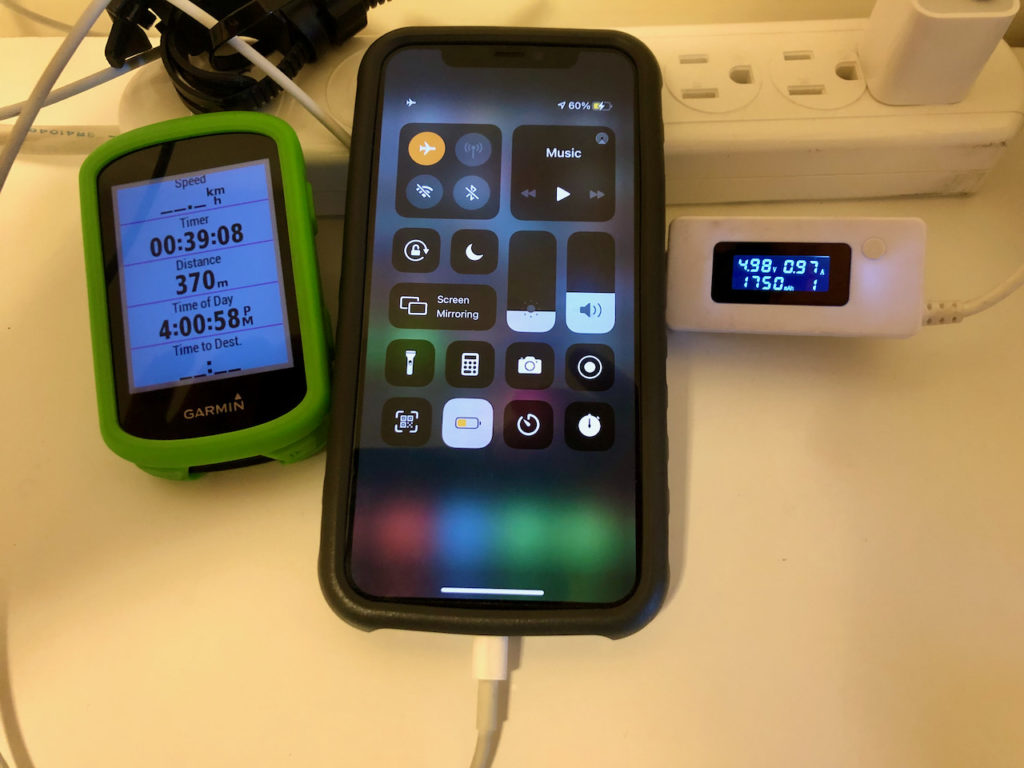
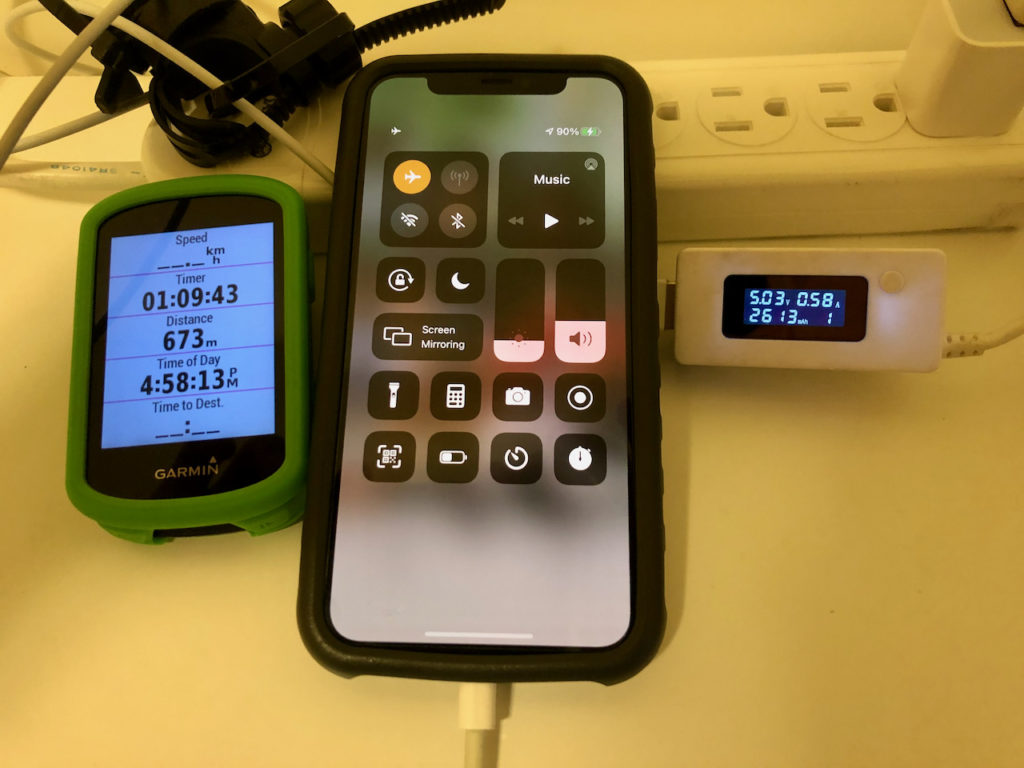
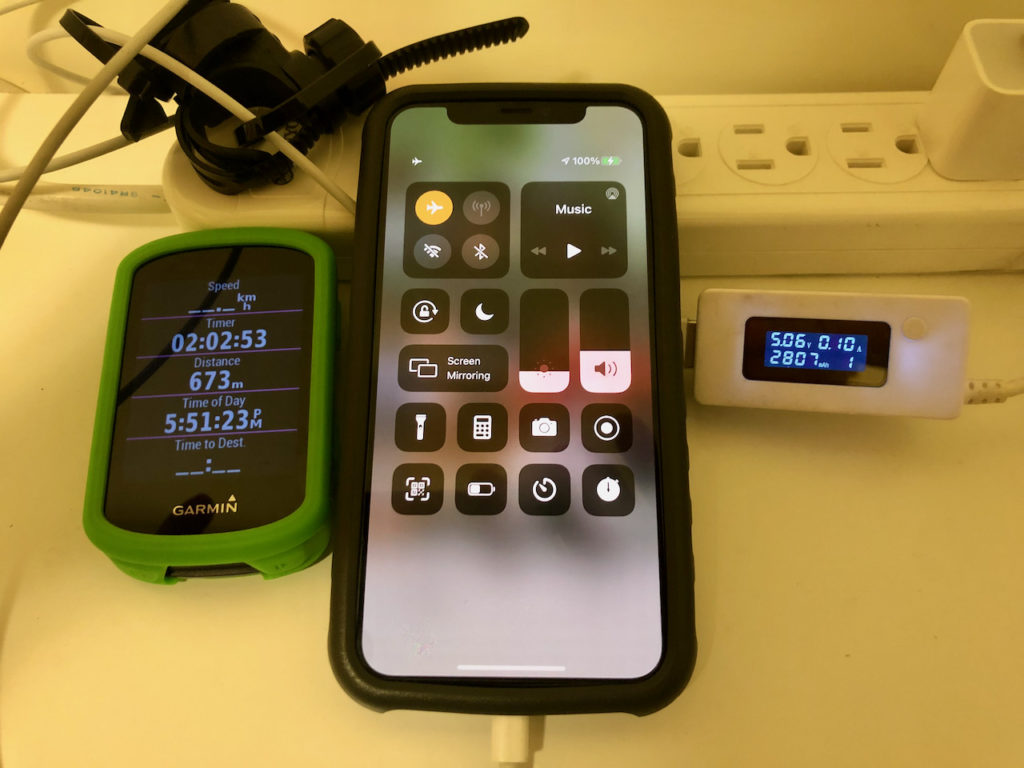
As you can see, to charge my iPhone 11 Pro from flat to full, it took the USB wall charger 3 hours 34 minutes, more than the time required for SPIN UP F12W-Pro, which is 3 hours and 4 minutes. It also appears that more energy (2807mAh vs 2705mAh) is required for the wall charger to fully charge the battery.
Conclusion: When the bike is traveling at an average speed of 17km/h, the SPIN UP F12W-Pro is able to serve as a stable power source and charge my iPhone from flat to full within the time range of a 1A USB wall charger from Apple.
How about when the iPhone is running some Apps?
On a September morning, I cycled on the Riverside Bikeways with my iPhone connected to the SPIN UP F12W-pro. Strava and Google Maps were launched to track my activity and for navigation. The screen was on the whole time with brightness level at around 80% for the first hour. At 9:53 when I started cycling, the battery level was 17%. About an hour later at 10:57, the battery level reached 27%. The reading on my USB meter was 1007mAh. That means, even when the iPhone was in heavy use, SPIN UP F12W-Pro could still raise the battery level by 10% in an hour. From a previous experiment as shown in Table 2, we’ve learned that the dynamo can raise the battery level by 30% in one hour when the iPhone is ON and standby (Low Power, Non-Airplane mode). So, we can deduce that about two thirds of the charging power was consumed by the two apps and the screen.
Then, I left the two apps on but kept the screen off and cycled for another hour. At 11:59, the battery level was 56% (gained by 29%). It shows that when the two apps were running with the screen off, they consumed much less energy.
Table 4: iPhone in Normal, Non-Airplane mode charged by SPIN UP F12W-Pro, with Apps running
| Record Time | Time Elapsed / Total Time Elapsed | Meter Reading (mAh) | Battery Level (%) | Battery Level Gained (%) | Apps | Screen |
|---|---|---|---|---|---|---|
| 09:53 | 0:00 / 0:00 | 0 | 17 | - | Strava, Google Maps | ON the whole time with 80% brightness |
| 10:57 | 1:04 / 1:04 | 1007 | 27 | 10% | Strava, Google Maps | ON the whole time with 80% brightness |
| 11:59 | 1:02 / 2:06 | 2015 | 56 | 29% | Strava, Google Maps | OFF most of the time and ON occasionally |
Conclusion: The SPIN UP F12W-Pro’s stable 1A output can raise the battery level even when the Phone is in heavy use.
How about when we are not cycling on a flat road?
On the flat Riverside Bikeway, the Spin Up F12W pro is capable of charging my iPhone 11 from flat to 90% in 2:49 and to 100% in 3:04. The performance is just like an 1A Apple USB wall charger. It could also power the iPhone when it is running Apps and at the same time put more energy into the iPhone’s battery.
How about when we are cycling on hilly routes? To find out, I plotted a 88km route with three 3 peaks (211m, 283m and 721m) to see how it goes. During the cycling trip, I used my phone the way I normally do and charged it with the Dynamo while I was cycling.

My Strava record for this test here
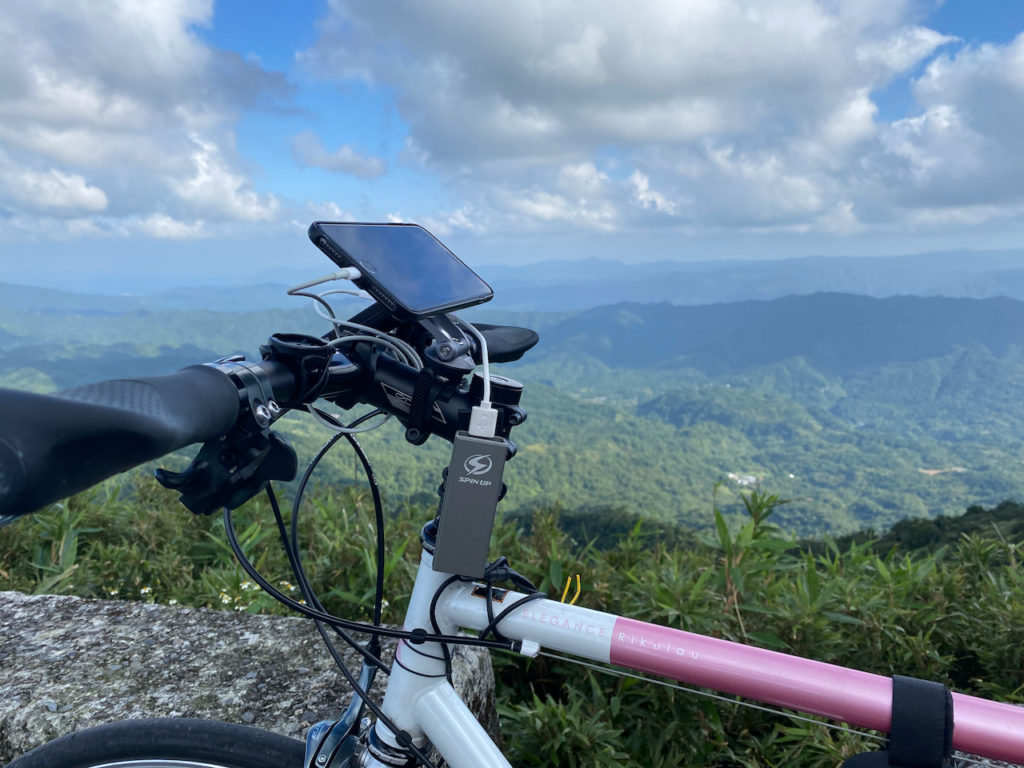
Here is the full record.
Table 5: iPhone in Normal, Non-Airplane mode charged by SPIN UP F12W-Pro, at different activity levels
| Record Time | Meter Reading (mAh) | Battery Level (%) | Activities |
|---|---|---|---|
| 9:39 | 0 | 9 | Start Cycling |
| 10:08 | 293 | 17 | After a short urban ride and a short breakfast break |
| 10:34 | 667 | 25 | First climb, reached the first peak (211m) |
| 10:39 | 740 | 26 | Descended from the first peak |
| 11:51 | 1739 | 52 | After the second climb, long but mild |
| 12:49 | 1739 | 41 | Lunch break |
| 13:10 | 2017 | 49 | Right before the third climb |
| 15:01 | 2299 | 38 | After the third climb, reached the top and took lots of pictures |
| 15:26 | 2643 | 48 | Descended from the top |
| 17:15 | 3975 | 77 | Return leg, 27km of intracity cycling |
During the first climb, the charging light was ON the whole time even when my speed dropped below 10km/h. The second climb was long and mild. My speed was well above 15km/h and the battery level was raised by 26%. The third climb was even longer and steeper. I gained 540m to the Wufenshan Meteorological Radar Observatory at the elevation of 721m. The charging light was OFF most of the time because of my low speed. I also spent a long time taking lots of pictures with my iPhone at the top. So, even though I managed to put 282mAh energy into the battery, the battery level dropped to 38%.
My 27km return leg was a flat, intracity ride mainly along Provincial Highway 5A. When I was home, the readings were 3975mAh on the meter and 77% on my iPhone battery.
I went out for a 88km hilly route with the battery level at 9% and was home with a battery level of 77%. I no longer need to worry about draining my smartphones’ battery when I have a SPIN UP F12W-Pro.
How to Get the Most Out of a SPIN UP F12W-Pro?
While the SPIN UP F12W-Pro is designed to work in various harsh conditions, it may not be the same for our smartphones. We will need to take good care of our smartphones when they are being used in an outdoor environment so that they can take in the maximum power from the dynamo.
Charge the Hungry Device First
One tip about battery charging is, when the battery level is close to full, it will take a lot more time to fill up the remaining capacity. As shown in our previous experiments, the average time needed to charge the phone from 90% to 100% is much longer. So, if the battery level of the phone has already reached 90% or so and you have another phone with lower battery level, it’s probably wiser to charge the other phone instead. You will make better use of your charging time and the Dynamo.
Keep the Phone Cool
Lithium ion batteries are meant to be charged at cool temperatures. We need to keep our smartphones in well ventilated places and avoid long exposure to direct sunlight in order to prolong the life of the lithium ion batteries within. The handlebar or the stem is usually a good place for the smartphone because we can use it while cycling and sunlight is often blocked by our body. It can also be kept cool by the apparent wind. However, if during summer and my shadow is not covering the phone, I would often tilt the phone until only one of its edges is facing the sun, so as to minimize the impact of direct sunlight. It helps to keep my smartphone as cool as possible.
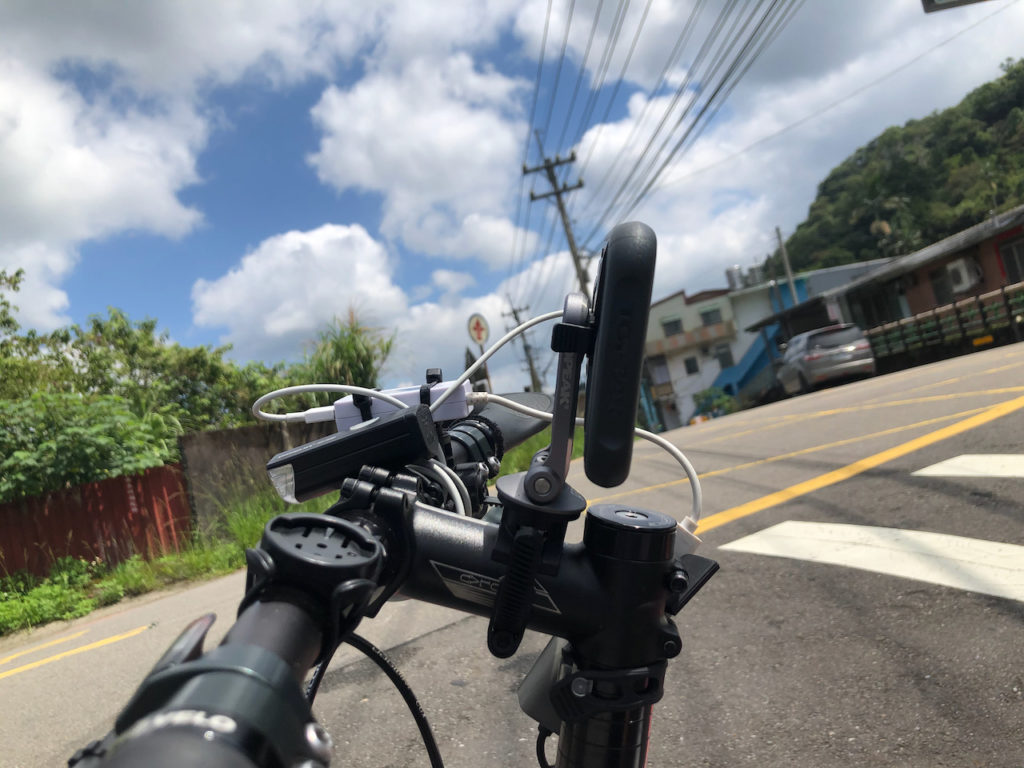
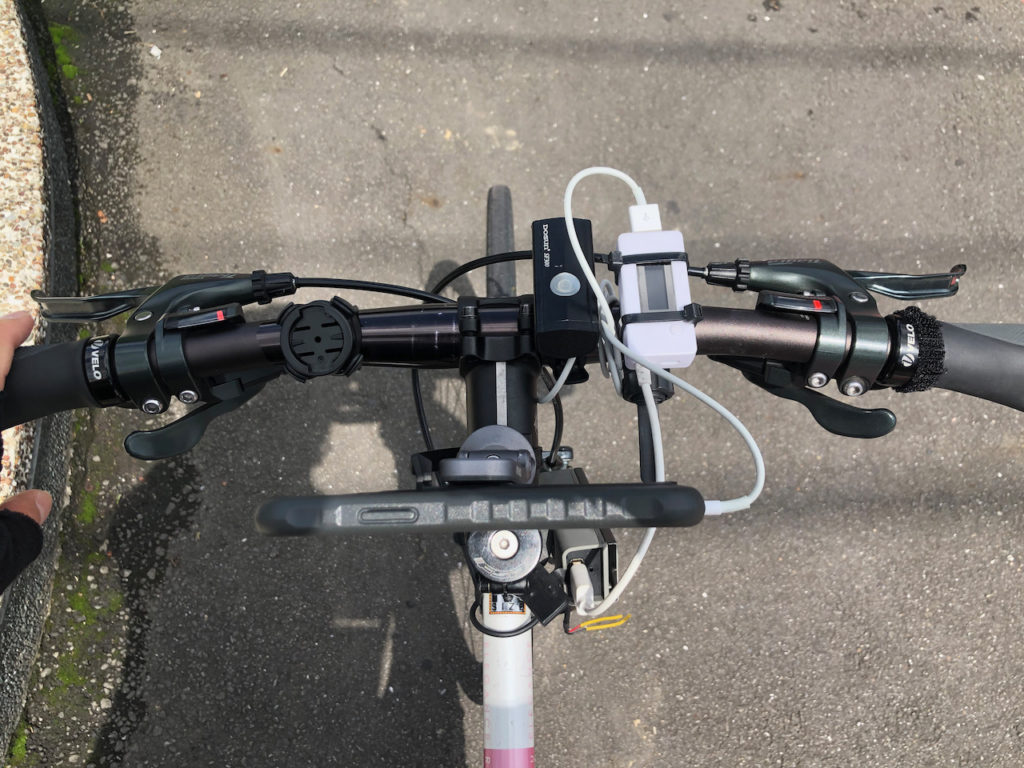
A Bright Screen is also a Heat Source
The screen, when turned on, is another heat source especially when it’s being used in broad daylight, because the brightness level of the screen will be maxed out for clearer display. It also means more energy is being consumed by the screen and more heat being generated. So, when it’s hot, keep the screen off as much as possible.
There were times when I had to cycle under the heat in the Summer days of Taipei. I set my iPhone with only its edge facing the sun and its screen turned off. The charging current was at 1A, meaning that the phone was still able to be charged with maximum power available. Then once I received and finished a quick phone call during one of these rides, the USB meter showed that the charging current dropped. When the screen was off, the charging current almost dropped to zero and the screen felt hot to the touch. The phone must be overheated so that it couldn’t be charged. After I found shelter and wiped the screen with a piece of wet cloth to cool it down, the charging current resumed to normal.
There were also a couple times when I cycled with my phone facing upward and the screen turned on for navigation under the heating sun. The current shown on the meter was around 0.5A even when I was travelling at the minimum required speed. The battery level was not rising. The screen was hot because it was heating up by itself and the sun at the same time. This made the phone too hot to be charged. But why was the phone still accepting the current from the Dynamo? And why was the battery level not dropping either? My conclusion is the phone must be tapping the power source for immediate consumption, like powering the screen. Therefore for those who need to use their phone while cycling, they can still preserve the energy in the battery if they use a Dynamo.
Use a Clean Connector To Maximize Charging Performance
Another possible issue that would hinder the charging process is the oxidized pins of the connector. I had once used the lightning connector shown in the picture. Even when the charging status was ON, the current was not stable and fluctuated between 0.5A to 1A. Therefore it’s important to use a clean connector for maximum charging performance.
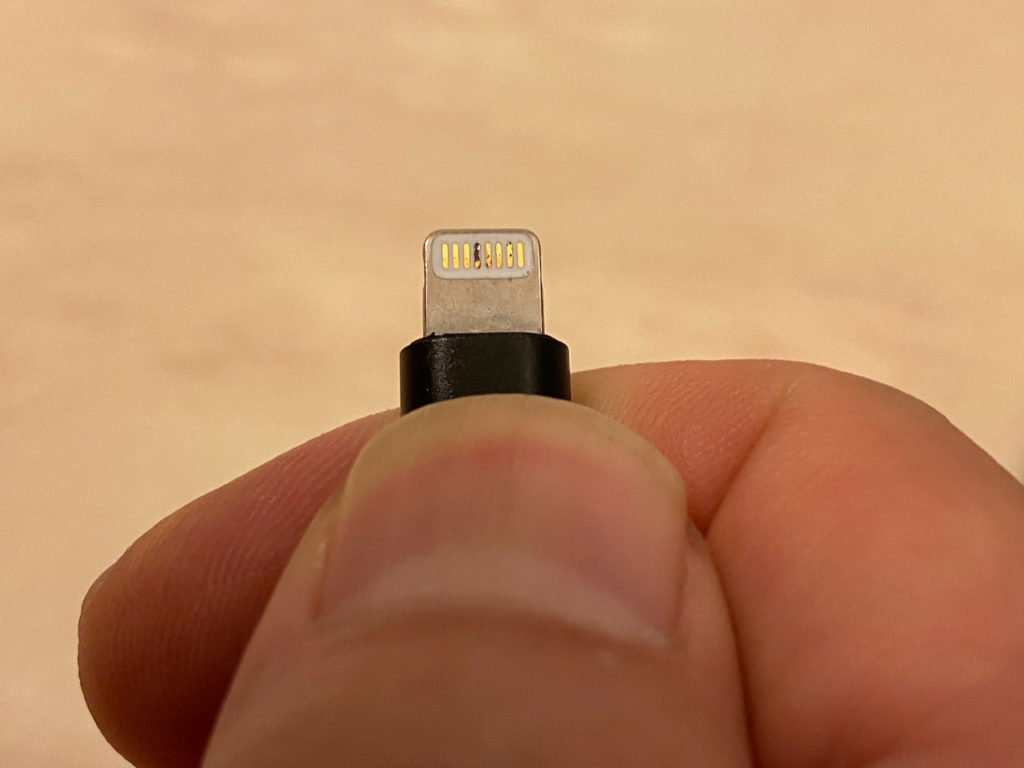
Keep the Connectors Dry
The SPIN UP F12W-Pro dynamo set (including the dynamo on the wheel and the USB charging unit) is water resistant with a rating of IPX4. I have cycled with the dynamo set in heavy rains several times. I have also washed my bike with the dynamo installed on the wheel but the USB charger unit removed. So far no harm has been done and the dynamo set is working totally fine. On the other hand, my iPhone is water and dust resistant with a rating of IP68. However, it is not supposed to be charged when it is wet. It can even tell when the lightning connector is wet and subsequently suspend the charging process. So, when you are out cycling in the rain, it may be a good idea to charge your phone in a waterproof bag and make sure it is dry.
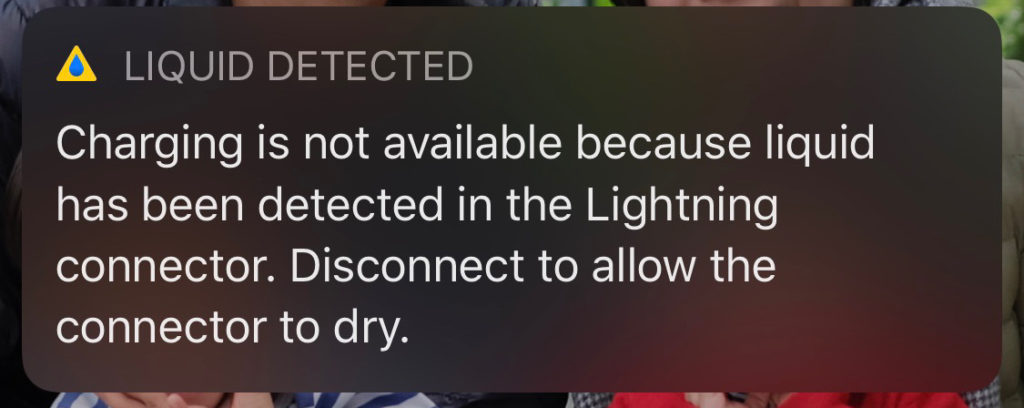
More Room For the Connectors
I used to mount my iPhone on the centre of the handlebar. Once I had the lightning connector bumped against the stem when I rolled over an uneven road surface at high speed. That’s how I got a broken lightning cable as shown in the picture. The lesson is: make sure you have enough room for the connector or tilt the phone horizontally.
